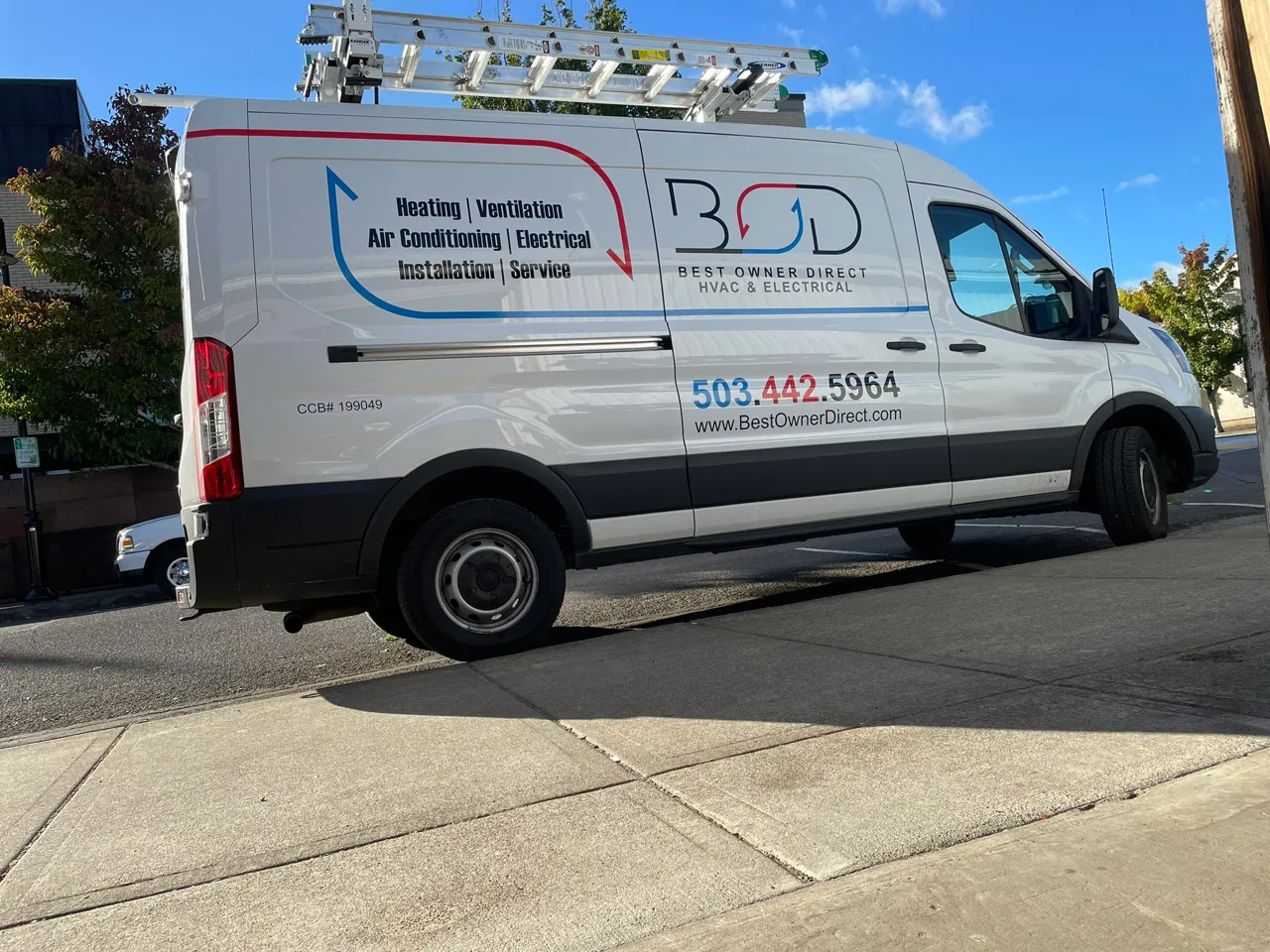Menu
Indoor Air Quality in Newberg, OR
Breathe easier with indoor air quality services from Best Owner Direct HVAC & Electrical in Newberg, OR. Cleaner, healthier air starts here. Book now!

Indoor Air Quality Services in Newberg, OR
Cleaner, healthier indoor air is critical for Newberg homes where seasonal weather, vineyard pollen, and wildfire smoke can combine with common household pollutants to reduce comfort and increase health risks. This page explains practical, decision-ready indoor air quality solutions for Newberg OR homeowners, covering air purification systems, humidity control, ventilation improvements, allergen reduction strategies, testing services, duct cleaning and sealing, and the measurable health benefits occupants can expect.
Why Indoor Air Quality Matters in Newberg
Newberg sits in the Willamette Valley climate zone.
- Winters are cool and damp, raising indoor humidity and the risk of mold growth.
- Spring brings high pollen counts from trees and flowering vines.
- Summers can include regional wildfire smoke events that drive dangerous fine particulate matter (PM2.5) into homes.
Many local houses are sealed tightly for energy efficiency, which traps pollutants indoors. Addressing indoor air quality in Newberg OR means reducing particulates, controlling humidity, limiting volatile organic compounds (VOCs), and improving ventilation for year-round comfort and health.
Common Indoor Air Quality Issues
- Elevated pollen and seasonal allergies in spring and early summer
- Wildfire smoke and PM2.5 exposure during regional smoke events
- Mold and musty odors in basements and crawl spaces
- Excess indoor humidity in winter causing condensation and mold growth
- Dust, pet dander, and dust mites circulating in living areas
- VOCs from cleaning products, paints, and new materials
- Poor ventilation and leaky ductwork spreading contaminants
Diagnostic Process for Indoor Air Quality
Effective solutions start with accurate testing and inspection. Typical steps include:
- Visual inspection of HVAC equipment, appliances, visible mold, and moisture intrusion
- Air testing for particulates (PM2.5), VOCs, relative humidity, and carbon dioxide
- Duct inspection with cameras and pressure testing to identify leaks and contamination
- Filter and HVAC system evaluation to determine necessary upgrades
These diagnostics clarify whether the issue is source-driven, ventilation-related, or filtration-limited, guiding the right solutions.
Air Purification Solutions
- High-efficiency filtration (whole-home): Upgrading to higher MERV filters or media filters removes dust, pollen, and allergens.
- HEPA filtration (portable or whole-house): Captures 99.97% of particles down to 0.3 microns—vital during wildfire smoke events.
- Electronic air cleaners and ionizers: Can reduce fine particles but effectiveness varies; best for PM2.5 when smoke is a concern.
- UV germicidal lights: Installed in ductwork to reduce microbial growth, bacteria, and viruses.
- Activated carbon or VOC filters: Target odors and chemical pollutants from paints, cleaners, and renovations.
For Newberg homes, a combination of HEPA-level filtration and activated carbon often provides the best defense against smoke and odors.
Humidity Control and Ventilation Improvements
- Dehumidification: Keeps humidity between 40–50% during damp months to prevent mold and dust mites.
- Humidification: Adds comfort in dry winter air without promoting mold.
- Balanced ventilation (HRV/ERV): Brings in fresh outdoor air while minimizing energy loss—ideal for tightly sealed homes.
- Kitchen and bath exhaust fans: Reduce moisture and remove combustion byproducts at the source.
Allergen Reduction Strategies
- Source control: Store firewood outdoors, maintain crawlspace ventilation, and control indoor moisture.
- Regular cleaning: Use HEPA vacuums, wash bedding in hot water, and reduce dust build-up.
- Pet management: Keep pets out of bedrooms and groom them outside.
- Enhanced filtration: Pair upgraded HVAC filters with portable HEPA units in bedrooms and living spaces.
Duct Cleaning and Sealing
- Duct cleaning: Removes dust, mold spores, pet dander, and debris that circulate throughout the home.
- Duct sealing: Prevents pollutants and moisture from entering the system from attics, crawlspaces, or wall cavities.
Benefits include:
- Improved HVAC efficiency and airflow
- More consistent indoor temperatures
- Lower dust levels and fewer allergy triggers
Health Benefits of Cleaner Indoor Air
- Reduced allergy and asthma symptoms from lower pollen, dust, and pet dander
- Fewer respiratory issues during wildfire smoke events with PM2.5 filtration
- Lower risk of mold-related health effects through humidity control
- Improved sleep and cognitive function with better ventilation and lower CO2
- Greater comfort and fewer odor problems year-round
Maintenance and Long-Term Care
- Replace HVAC filters regularly according to MERV rating and household conditions
- Schedule HVAC tune-ups for proper airflow and filtration
- Re-test indoor air quality after renovations, wildfire seasons, or new symptoms
- Monitor indoor humidity with a hygrometer to stay within 40–50%
- Keep vents and returns unblocked and ensure exhaust fans work properly
Ongoing maintenance ensures long-lasting results and healthier living conditions.
Your Partner for Indoor Air Quality in Newberg
Cleaner air is more than comfort—it’s essential for health, safety, and long-term home value. From advanced air purification and humidity control to duct cleaning and ventilation upgrades, you can trust Best Owner Direct HVAC & Electrical for expert solutions tailored to Newberg’s unique challenges.
Discover savings on our promotions, explore homeowner resources on our blog, and schedule your consultation today through our contact page to create a healthier, more comfortable home environment.


